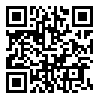
International Journal of Molecular and Cellular Medicine (IJMCM)
Cellular and Molecular Biology Research Center, Babol University of Medical Sciences
BibTeX | RIS | EndNote | Medlars | ProCite | Reference Manager | RefWorks
Send citation to:
URL: http://ijmcmed.org/article-1-594-fa.html
Autism is a common neuropsychiatric disorder affecting 1 in 68 children. Copy number variations (CNVs) are known to be major contributors of autism spectrum disorder (ASD). There are different whole genome or targeted techniques to identify CNVs in the patients including karyotyping, multiplex ligation-dependent probe amplification (MLPA) and array CGH. In this study, we used karyotyping and MLPA to detect CNVs in 50 Iranian patients with autism. GTG banding and 4 different MLPA kits (2 subtelomeric and 2 autism kits) were utilized. To elevate our detection rate, we selected the sporadic patients who had additional clinical features including intellectual disability, seizure, attention deficit hyperactivity disorder, and abnormal head circumference. Two out of 50 patients (4%) showed microscopic chromosome abnormalities and 5 out of 50 (10%) demonstrated copy number gains or losses using MLPA kits. Including one overlapping result between karyotype and MLPA techniques, our overall detection rate was 6 out of 50 (12%). Three out of 6 CNVs were de novo and three others were paternally inherited. Two of CNVs detected by karyotyping and MLPA tests were 16p13.1q13.3 and 10q26.3 duplications, respectively. For these two CNVs genotype and phenotype of the patients were compared with other studies. Although the pathogenicity of cytogenetic results was certain, most of MLPA results needed to be better refined using other more accurate techniques such as array CGH. Our findings suggest that it might be possible to obtain some useful information using MLPA technique but it cannot be used as a single diagnostic tool for the autism.
دریافت: 1395/7/4 | پذیرش: 1395/7/13 | انتشار: 1395/9/15
| بازنشر اطلاعات | |
 |
این مقاله تحت شرایط Creative Commons Attribution-NonCommercial 4.0 International License قابل بازنشر است. |



